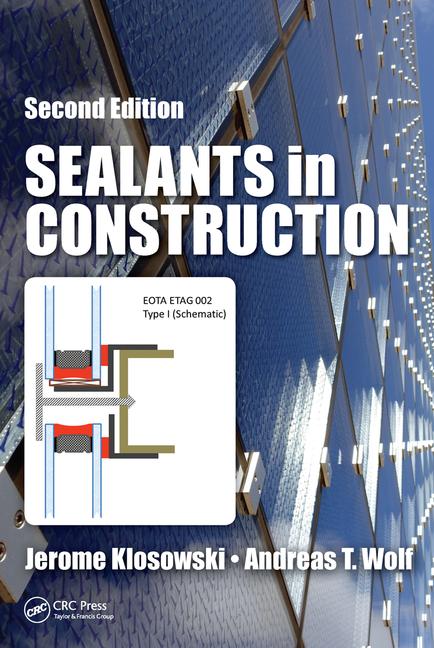What Makes a Good Construction Adhesive?
Adhesive manufacturers continue to innovate and offer products that meet the evolving needs of the construction industry.

Construction adhesives are a growing business, and for good reason. They can be used in almost any construction project, big or small, and they strengthen and improve the longevity of common projects like installing subflooring, hanging drywall, finishing trim and moldings, and hanging cabinets, as well as outdoor landscaping and finishing projects. Construction adhesives are typically packaged in cartridges, applied using a caulk gun, and then cured or dried at ambient temperature.
Four common technologies are used in the construction adhesives industry: latex, solvent, polyurethane, and modified silane or “hybrids” (see Figure 1). These four technologies create a good-better-best option, with latex and solvent-based adhesives filling out the “good” category, polyurethanes representing “better,” and hybrids being “best.”

*Click the image for greater detail
Figure 1. Four common technologies used in the construction adhesives industry.
While any adhesive technology yields a stronger project than using fasteners alone, hybrids offer a solution that provides excellent initial hold and long-term strength when used on almost any substrate and in almost any weather. Construction professionals can be confident that a hybrid construction adhesive will get the job done quickly and correctly.
It’s no surprise that hybrids are the fastest-growing market segment within the adhesives and sealants industry. In fact, over the last five years, demand for hybrid products has grown roughly 50% annually.1 Innovation in the category has grown as well, with at least eight new hybrid products launching over the same period.1 Adhesive performance makes a huge difference on the job site, and with the hybrid market expanding, professional contractors have more choices than ever to meet the demands of their projects.
Four criteria should be considered when using a construction adhesive: ease of application, initial grab strength, fast return to service, and long-term strength and durability. Finding an adhesive that delivers on all four ensures a good overall experience from the time the contractor applies the product until long after their customers enjoy the finished job.
Ease of Application
The first feature a user notices when working with a construction adhesive is application. Construction adhesives are applied by placing a cartridge into a caulk gun and then squeezing the grip to extrude a bead of adhesive onto the surface to be bonded. The viscosity of the product dictates how easy or hard it is to extrude the adhesive out of the cartridge.
As the adhesive strength increases, usually so does the difficulty in extrusion. This is why many high-grab latex adhesives require a heavy-duty caulk gun for application. Repetitive use of high-viscosity adhesives can cause strain and wear on the body, especially when used for large jobs such as laying flooring, hanging drywall, installing landscaping block, or applying brick veneer. As a result, it’s important for a contractor to look for an adhesive that is easy to gun out.
Initial Grab Strength
Grab strength is an adhesive’s ability to hold the bonded object in place before it dries or cures. High grab is desirable because less manual holding, bracing, or tacking in place is required while waiting for the bond to cure. Adhesives with high grab make a job simpler and faster to complete.
While several adhesives on the market offer high grab strength, this key component may come at the expense of ease of application or longer-term hold. When considering grab strength in an adhesive, it’s important to look at it in conjunction with ease of application and long-term strength capabilities.
Fast Return to Service
Fast return to service, or how quickly you’re able to return a space to its normal use, is crucial for nearly every construction project. Every home or business owner wants to use their newly finished space as quickly as possible.
Contractors similarly seek ways to save time, which can be a direct cost-saving measure for their business. No one wants to hold up a job waiting for an adhesive to cure overnight. For those looking to minimize wait time, hybrid adhesives are the answer due to their ability to cure and build strength rapidly, ensuring a quick return to service (typically delivering same-day return to service), depending on ambient temperature and humidity.
Long-Term Strength and Durability
All adhesive users want a long-lasting, durable bond from whatever adhesive product they choose to use. When selecting a product, users should think about whether it will be an interior or exterior application and what elements the bond will have to withstand.
For example, for exterior applications, hybrids are a good choice as they have wider service temperatures and are waterproof. Customers should look for products that promise a strong bond from start to finish while not requiring trade-offs in ease of application, grab strength, or cure time.
Choosing the Right Construction Adhesive
Many choices are available across the adhesive space, but construction professionals should make sure to tailor their product purchase to the job at hand by considering application properties, initial grab strength, return to service, and long-term strength and durability. Hybrid adhesives are a growing category and are expected to continue to find increasing opportunities as they perform optimally across all desired criteria.
For more information, visit www.liquidnails.com.
Note: Opening image courtesy of ProfessionalStudioImages via www.gettyimages.com.
Reference
- Growth figures according to PPG internal estimates as of 2022.
Looking for a reprint of this article?
From high-res PDFs to custom plaques, order your copy today!









